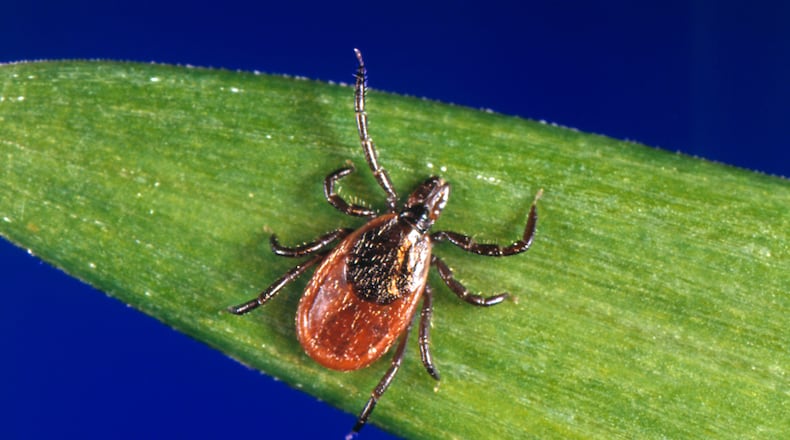“We’ve been seeing an increase for about the last five years or so,” said Dr. Grant Mussman, with the Cincinnati Health Dept. “Up from, you know, dozens of cases up to, you know, four to 500 in the last couple of years.”
In 2021, there were 590 Lyme disease cases reported in Ohio.
According to the Ohio Department of Health data, there are about a dozen species of ticks that have been identified in the state.
Joshua Benoit, an entomologist and professor of biological sciences at the University of Cincinnati, said we’re starting to see new species of ticks locally, including the gulf coast tick.
“It was such a mild winter this past year that we’re starting to see more ticks that are surviving,” Benoit said.
“We actually do tick collections every month and we started collecting ticks as early as January this past year. So, it’ll probably be a bad season,” he said.
There are things you can do to protect yourself. If you’re going to be in a grassy or wooded area, wear long pants and make sure to use insect repellent on any exposed skin.
“Check your hair, check armpits, those areas,” Benoit said. ”You want to make sure that you don’t have a tick bite because if you catch it early, you’re likely to not get any diseases from a tick bite.”
That’s why it’s important to check yourself and your pets for ticks after coming indoors.
“It needs to be attached for about a day and a half to two days before transmitting the disease,” Dr. Mussman said.
Bottom line: The sooner you catch it, the better.
But if you do spot one, Benoit said the best way to remove it is by using tweezers.
“Grab the actual mouth parts of the tick and pull the whole thing out,” he said. “That’s really important.”
For more information from the Ohio Department of Health about tick-borne illnesses, click here.
This article was originally published by our content partner, WCPO-9, in Cincinnati.
